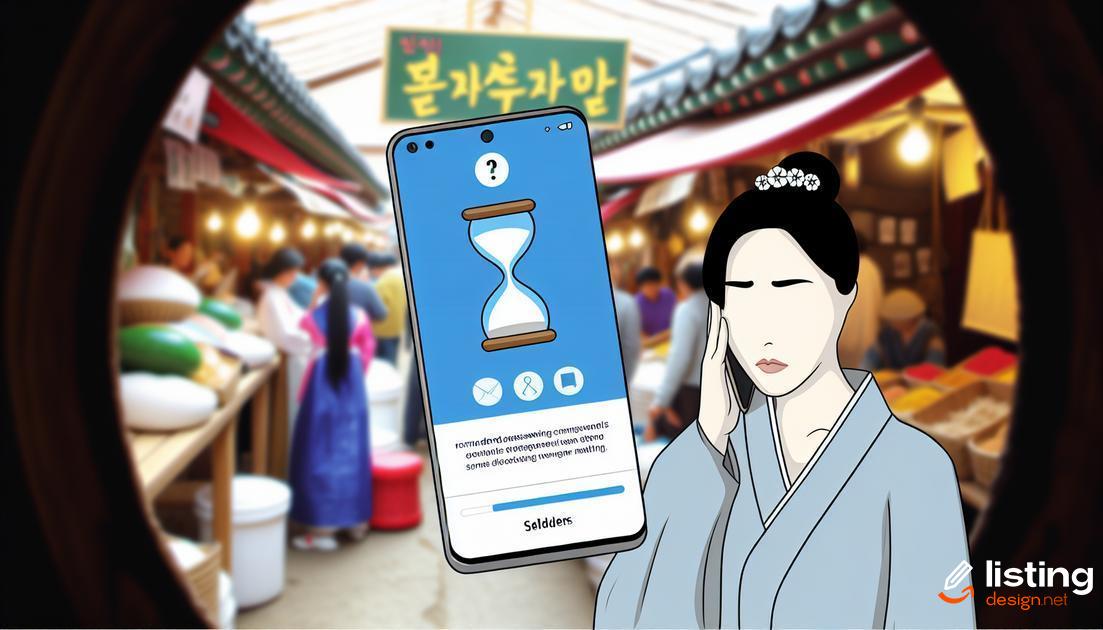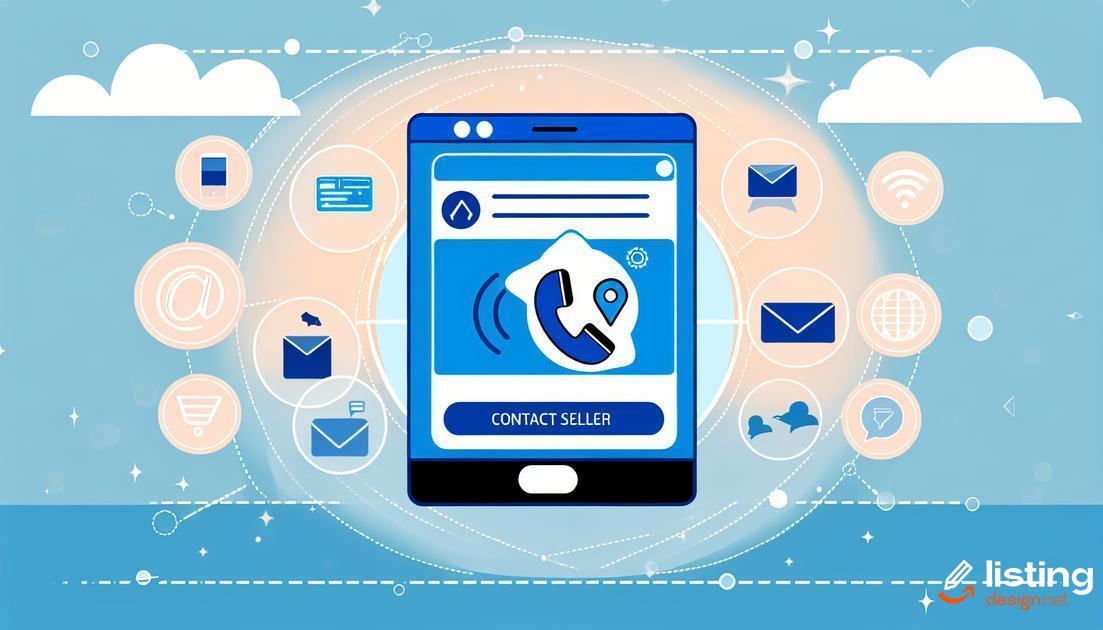Looking to get in touch with a seller on Amazon? Whether you have a question, need more product details, or want to resolve an issue, there are several methods to contact them directly. This guide will walk you through easy steps to reach out, emphasizing the importance of effective communication and how to navigate Amazon’s features to find the contact information you need.
Table of Contents
Why Contacting a Seller is Important
Building a direct connection with the seller can provide several advantages. Firstly, it allows you to seek specific product information that may not be available in the product description. This can be incredibly useful for understanding product details, confirming compatibility, or ensuring that the item meets your needs. Additionally, contacting the seller can help address any concerns related to delivery times, shipping costs, or product availability. If any issues arise, such as a delayed shipment or a damaged product, direct communication with the seller can often lead to faster resolution.
Moreover, direct contact can sometimes result in better customer service, as sellers may prioritize queries received through direct channels. For those considering bulk purchases or looking for customized options, discussing these possibilities directly with the seller can facilitate a more tailored shopping experience. Furthermore, you can also seek clarifications about return policies, warranty information, and other terms and conditions that are critical for making an informed purchasing decision.
Finding the Seller’s Contact Information

After identifying the specific seller you want to contact on Amazon, you can find their contact information by following a few steps within the platform. Knowing how to do this can significantly streamline your communication process.
Step-by-Step Process:
- Navigate to Your Orders: Go to Your Orders page on Amazon. This can be easily accessed via the dropdown menu under ‘Accounts & Lists’ on the top right of the Amazon homepage.
- Select the Order: Find and select the order associated with the seller you need to contact. This ensures that you’re directing your query about a specific product.
- Contact Seller Option: Click on the ‘Problem with order’ button next to the specific order. This will direct you to a page where you can click ‘Contact Seller’.
If you’re not attempting to contact the seller from an existing order, you can use the storefront to find their contact information.
Contacting via Storefront:
- Visit Seller Profile: Navigate to the seller’s storefront by clicking on their name under the product title.
- ‘Ask a Question’ Button: On the seller’s profile page, look for the ‘Ask a Question’ button. This will open a messaging window where you can send your inquiry directly to the seller.
Utilizing these methods ensures that you are accessing the proper channels set by Amazon for efficient communication with sellers.
Using the ‘Ask a Question’ Feature
The ‘Ask a Question’ feature on Amazon allows you to directly reach out to the seller with any inquiries about their products. This feature is ideal for getting specific information that might not be available on the product listing.
When attempting to use this feature, locate the ‘Ask a Question’ button generally situated on the product page. Clicking this will open a dialogue where you can type your question.
Keep your questions clear and concise. The better you articulate your query, the more precise and timely the response you are likely to receive. You might want to ask about product specifications, shipping details, or any other concern you have about the item.
Using this feature can significantly enhance your buying experience by ensuring you have all the necessary information to make an informed purchase.
Sending a Message Through Amazon

When you need to contact a seller on Amazon, using the platform’s built-in messaging system ensures your communication is documented and secure. This method helps both buyers and sellers keep track of important conversations regarding purchases, returns, or product inquiries.
Step-by-Step Guide to Sending a Message Through Amazon:
- Log into Your Amazon Account: Ensure you are logged into your Amazon account to communicate directly with sellers.
- Navigate to Your Orders: Go to the ‘Your Orders’ section, where you can view past and current purchases.
- Select the Order: Find and select the order related to the item you wish to inquire about.
- Click on ‘Problem with Order’: This option will guide you to the contact seller interface.
- Choose a Subject: Select the relevant subject for your message from the provided options to help streamline the communication process.
- Type Your Message: Use clear and concise language to describe your query or issue. Include essential details such as order number, product specifications, and any other relevant information.
- Send the Message: Once you’ve typed your message, review it for clarity and completeness, then click ‘Send’ to dispatch your message to the seller.
Checking the Seller’s Profile Page
When shopping on Amazon, it’s essential to examine the seller’s profile page. This page provides a wealth of information about the seller, which can help in assessing their credibility and reliability.
Look for the ‘Seller Information’ section where you will find details such as the seller’s rating, how long they have been selling on Amazon, and the number of reviews they have received. This can give you an idea of their track record and customer satisfaction level.
It’s also beneficial to review the ‘Business Name’ and ‘Business Address’ if available. These details may offer insight into the legitimacy of the seller.
Pay attention to the feedback left by other customers. Navigate to the ‘Feedback’ section to read reviews specifically about the seller’s service. This can include information on shipping times, the accuracy of the product description, and the quality of customer support.
If the seller has a ‘Return Policy’ listed, make sure to review it carefully as this can affect your purchasing decision. Some sellers offer more favorable return conditions, which can be crucial if you’re uncertain about a purchase.
To further understand the seller’s responsiveness, check if they provide any direct contact information such as an email address or phone number. However, remember that direct communication may still need to comply with Amazon’s policies.
Examining these elements thoroughly ensures that you make informed decisions and helps in establishing trust with the seller.
Reading Product Listings for Contact Info

One effective way to get in touch with an Amazon seller is by carefully reading product listings. Each product page often contains valuable details that may include the seller’s contact information or methods to reach them.
Look for Seller Information: Navigate to the ‘Sold by’ section on the product page. This typically provides the seller’s name along with any direct links to their profile page where additional contact information might be available.
Check Product Descriptions: Sometimes, sellers include their contact details or customer service email within the product description section. This is often placed towards the beginning or end of the descriptions, so scroll through thoroughly.
Contact Details in Images:
In some cases, contact information might be embedded within the images or product infographics. Pay attention to any emails, phone numbers, or websites mentioned in product images.
Read FAQs: Frequently Asked Questions (FAQs) sections can also host valuable contact information. Sellers may address common inquiries and provide their contact details for further assistance.
By diligently reviewing these areas, you can gather essential contact information to reach out to the seller directly.
Managing Responses from Sellers
Once you have sent a message, it is crucial to keep track of any responses from sellers. Ensure you regularly check your Amazon messages to avoid missing any important communication.
Response Time: Sellers may take varying amounts of time to respond. Typically, Amazon encourages sellers to reply within 48 hours. Be patient, but if you don’t hear back within this timeframe, consider following up politely.
Clarifying Questions: If a seller replies asking for more details, provide clear and concise information. This can help speed up the resolution process. Always remain professional and courteous in your communication.
Saving Correspondence: Keep a record of all your communications with the seller. This can be useful for future reference, especially if there are any disputes or misunderstandings about the purchase.
Language Barriers: Be mindful that some sellers might not be proficient in your language. Use simple and clear language to avoid misunderstandings. You can also use translation tools if needed to help bridge any communication gaps.
Follow-up: If you haven’t received a response, send a polite follow-up message. This reminds the seller of your inquiry without seeming too pushy.
Escalating Issues: If you encounter significant or ongoing issues with a seller’s responsiveness, you can report this to Amazon customer service for further assistance.
Managing responses effectively ensures smoother communication and better resolution of any issues. Always remain polite and patient during your interactions.
Handling Non-Responsive Sellers

Dealing with non-responsive sellers on Amazon can be frustrating. Here are some strategies to manage this situation effectively:
- Follow-up Messages: Send a follow-up message through the Amazon messaging system. Sometimes, initial messages might be overlooked!
- Check Communication Policies: Confirm whether the seller has specific communication policies or response times listed on their profile.
- Amazon’s Automated Attempts: Utilize Amazon’s automated attempts if a seller doesn’t respond within 48 hours. This feature prompts the seller to reply.
- Open an A-to-Z Guarantee Claim: If you’re not getting a response and have an outstanding issue with an order, consider opening an A-to-Z Guarantee claim.
- Leave Feedback: Informing others about the seller’s responsiveness in your feedback can help future buyers.
- Consider Seller Ratings: Taking note of the seller’s ratings might provide insights into their service reliability and response rate.
- Request Customer Service Assistance: Reach out to Amazon’s customer service for additional support regarding non-responsive sellers.
Addressing non-responsive sellers not only helps you resolve your issues but also contributes to a better overall purchasing experience for everyone.
Using Social Media to Contact Sellers
Social media platforms can be effective channels to contact sellers on Amazon. Sellers often have social media profiles to promote their products and brands. By visiting their profiles, you can usually find additional contact information and engage in direct conversations.
Start by searching for the seller’s name or brand on platforms like Facebook, Twitter, and Instagram. Many companies maintain active social media accounts that they monitor regularly, making it easier to get a quick response.
On these platforms, look for the following:
- The official page or profile of the seller.
- Contact details in the ‘About’ section or profile bio.
- Previous interactions or comments from other customers.
When you find their profile, you can reach out via direct message or by commenting on one of their posts. Keep your message concise and to the point, including essential details like order number and specific queries. This helps the seller address your concern effectively.
Additionally, social media offers the advantage of public visibility. If your message doesn’t receive a prompt response, other potential customers might see your interaction, pushing the seller to respond swiftly to maintain their reputation.
Remember to remain polite and professional in your communications to ensure a positive interaction.
Leveraging Customer Service for Help

If you are having trouble reaching a seller or need further assistance, Amazon’s customer service can be a valuable resource. They are equipped to handle various issues and can facilitate communication with the seller on your behalf.
Contacting Customer Service
Start by navigating to the Help section on Amazon’s website. Here, you can browse through topics or use the search bar to find information related to your problem. Look for the option to ‘Contact Us’ for direct support.
Choosing the Right Topic
When reaching out, select the appropriate category that closely matches your issue. This ensures your request is routed to the right team. Common options include order issues, return questions, and account concerns.
You can contact customer service via email, phone, or chat, offering flexibility based on your preferences. Phone and chat options often provide quicker responses.
Providing Necessary Details
When contacting customer service, be ready to provide specific information like your order number, product details, and any previous correspondence with the seller. This helps expedite the process and provides complete context for resolving your issue.
Following Up
After your initial contact, keep track of any case numbers or reference information provided. Follow up if you do not receive a timely response. Customer service can offer updates or escalate your issue if needed.
Utilizing customer service effectively can resolve many issues that arise when dealing with third-party sellers on Amazon, ensuring a smoother shopping experience.
Reporting Issues to Amazon
If you encounter issues with an order or a seller that cannot be resolved through direct communication, it’s essential to know how to report these issues to Amazon for appropriate action.
Step-by-Step Process to Report Issues:
- Navigate to Your Orders: Log in to your Amazon account and go to the ‘Your Orders’ section. Locate the order associated with the issue.
- Find the Problem with the Order: Click on ‘Problem with order’ next to the item you’re having issues with. This will take you to a new page with various options.
- Select Your Issue: Choose the option that best describes your issue. Options may include ‘Order not received’, ‘Received incorrect item’, ‘Item defective or doesn’t work’ and so on.
- Follow the Prompts: Follow the on-screen prompts to provide more details about your issue. Be as specific as possible to help Amazon understand and resolve the problem swiftly.
- Submit the Report: Review your information, and once you are satisfied, submit the report. Amazon will send you a confirmation email and will investigate the issue.
Alternative Method: Amazon A-to-z Guarantee
If the issue remains unresolved, you may file a claim under the Amazon A-to-z Guarantee.
- Navigate to the A-to-z Guarantee: In the ‘Your Orders’ section, find and select the order you need help with. Click on ‘File/View Claim’ under ‘A-to-z Guarantee’.
- Fill Out the Form: Complete the form with necessary details about your issue, including dates, amounts, and a detailed explanation of the problem.
- Submit Your Claim: Once the form is complete, submit it for review. Amazon will evaluate your claim and may reach out for additional information.
Reporting issues to Amazon ensures that both buyers and sellers maintain trust and integrity on the platform. By following these steps, you can help keep the marketplace fair and reliable for everyone.
Best Practices for Effective Communication

Effective communication plays a crucial role when reaching out to Amazon sellers. Here are some best practices to help you communicate effectively:
- Be Clear and Concise: Make sure your message is easy to understand, and avoid unnecessary details. State your query or concern in simple language.
- Use Proper Grammar and Punctuation: Well-written messages are taken more seriously. Double-check for spelling mistakes and grammatical errors before sending.
- Be Polite and Respectful: Always use courteous language. Being respectful can increase the likelihood of a positive and prompt response.
- Provide Relevant Details: Include essential details such as order number, product name, and any other pertinent information that can help the seller address your issue more effectively.
- Follow Up if Necessary: If you don’t receive a response within a reasonable timeframe, it’s okay to send a gentle follow-up message. However, avoid spamming the seller with repeated messages.
- Keep Records: Save all communication with the seller. This can be helpful if you need to escalate the issue or provide evidence to Amazon Customer Service.


